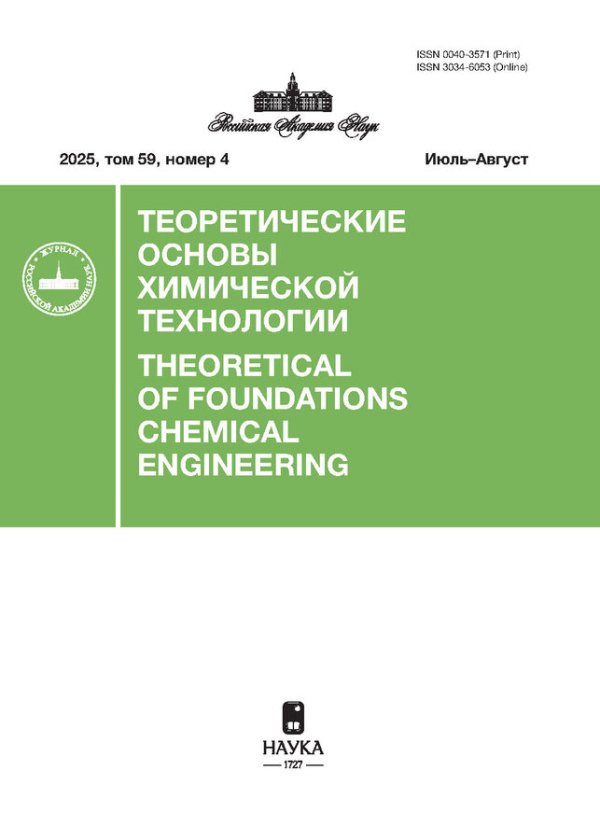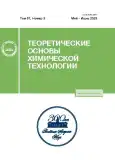Очистка от трития газовых потоков рабочих помещений ядерных объектов
- Авторы: Розенкевич М.Б.1, Кулов Н.Н.2, Пак Ю.С.1, Букин А.Н.1, Мосеева В.С.1, Марунич С.А.1
-
Учреждения:
- Российский химико-технологический университет им. Д.И. Менделеева
- Институт общей и неорганической химии им. Н.С. Курнакова РАН
- Выпуск: Том 57, № 3 (2023)
- Страницы: 257-265
- Раздел: Статьи
- Статья опубликована: 01.05.2023
- URL: https://journals.rcsi.science/0040-3571/article/view/138460
- DOI: https://doi.org/10.31857/S0040357123030156
- EDN: https://elibrary.ru/RPMBVY
- ID: 138460
Цитировать
Полный текст
Аннотация
Рассматриваются методы удаления тритий содержащих соединений водорода из различных газовых потоков научных и промышленных объектов ядерной и термоядерной отраслей. Проведен анализ возможностей удаления из газового потока трития в виде водорода и сделано заключение о том, что эти методы могут применяться при малых потоках очищаемого газа. Для больших газовых потоков основными методами детритизации являются адсорбционный и фазовый изотопный обмен воды. Оба эти метода предусматривают предварительное каталитическое окисление тритий содержащих молекул до воды с последующим удалением из газа тритированной воды. Проведено сравнение основных технологических параметров этих методов и сделан вывод о больших преимуществах метода фазового изотопного обмена.
Ключевые слова
Об авторах
М. Б. Розенкевич
Российский химико-технологический университет им. Д.И. Менделеева
Email: rozenkevich.m.b@muctr.ru
Россия, Москва
Н. Н. Кулов
Институт общей и неорганической химии им. Н.С. Курнакова РАН
Email: rozenkevich.m.b@muctr.ru
Россия, Москва
Ю. С. Пак
Российский химико-технологический университет им. Д.И. Менделеева
Email: rozenkevich.m.b@muctr.ru
Россия, Москва
А. Н. Букин
Российский химико-технологический университет им. Д.И. Менделеева
Email: rozenkevich.m.b@muctr.ru
Россия, Москва
В. С. Мосеева
Российский химико-технологический университет им. Д.И. Менделеева
Email: rozenkevich.m.b@muctr.ru
Россия, Москва
С. А. Марунич
Российский химико-технологический университет им. Д.И. Менделеева
Автор, ответственный за переписку.
Email: rozenkevich.m.b@muctr.ru
Россия, Москва
Список литературы
- Corcoran V.J. et al. New containment box for tritium operations //Fusion Technology. 1995. V. 28. № 3. P. 1321–1326
- Санитарные правила и нормативы СанПиН 2.6.1.2523–09 НОРМЫ РАДИАЦИОННОЙ БЕЗОПАСНОСТИ НРБ–99/2009. М.: Роспотребнадзор. 2009. 73 с.
- Перевезенцев А.Н. и др. “Гидриды интерметаллических соединений и сплавов, их свойства и применение в атомной технике” // Физика элементарных частиц и атомного ядра. 1988. Т. 19. С. 1386–1439.
- Перевезенцев А.Н., Розенкевич М.Б. Технология трития для термоядерного реактора. 2019Б Долгопрудный, ИД “Интеллект”, 336 с.
- Perevezentsev A.N. et al. Safety Aspects of Tritium Storage in Metal Hydride Form// Fusion Technology. 1995. V. 28. P. 1404–1409.
- Glugla M., Penzhorn R.-D. Development of fusion fuel cycle technology at the Tritium Laboratory Karlsruhe: the experiment CAPRICE // Fusion Engineering and Design. 1995. V. 28. P. 348–356.
- Session K. Processing tritiated water at the Savanna River Site:a production- scale demonstrationof a palladium membrane reactor // Fusion Science and Technology. 2005. V. 48. P. 91–96.
- Iwai Ya. et al. Experimental evaluation of tritium oxidation efficiency in the room temperature recombiner // Fusion Engineering and Design. 2018. V. 136. P. 120–124.
- Yu. Edao et al. Tritium oxidation test by platinum-alumina catalyst under moisture and hydrocarbons atmosphere // Fusion Engineering and Design. 2018. V. 136. P. 319–323.
- Гаспарян М.Д. и др. Керамические высокопористые блочно-ячеистые катализаторы окисления изотопов водорода с нанесенным платиновым активным слоем // Огнеупоры и техническая керамика. 2014. № 7–8. С. 49–54.
- Гаспарян М.Д. и др. Применение керамических высокопористых блочно-ячеистых катализаторов с нанесенным палладиевым активным слоем в процессе окисления водорода // Стекло и керамика. 2014. № 11. С. 22–25.
- Ivanova A.S. et al. Safety of Air Detritiation System Operation // Fusion Science and Technology. 2019. V. 75. P. 24–35.
- Edao Yu. et al. Effect of hydrocarbons on the efficiency of catalytic reactor of detritiation system in an event of fire // J. Nuclear Science and Technology. 2016. V. 53. P. 1831–1838.
- Willms R.S. et al. Mathematical comparison of three tritium system effluent HTO cleanup systems // Fusion Science and Technology. 2002. V. 41. P. 974–980.
- Sabathier F. et al. Assessment of the performance of the JET Enhauste Detritiation System // Fusion Engineering and Design. 2001. V. 54. P. 547–553.
- ASHRAE Handbook Fundamentals (SI). Chapter 6. Psychrometrics. P. 6.1–6.17.
- Malara C. et al. Evaluation and matagation of tririum memory in detritiation druers // J. Nuclear Materials. 1999. V. 273. P. 203–212.
- Allsop P.J. et al. The effects of residual tritium on air-detritiation dryer performance // Fusion Technology. 1992. V. 21. P. 599–603.
- Stork D. et al. Systems for the safe operation of the JET tokamak with tritium // Fusion Engineering and Design. 1999. V. 47. P. 131–172.
- Андреев Б.М., Зельвенский Я.Д., Катальников С.Г. Тяжелые изотопы водорода в ядерной технгике. М., ИздАТ, 2000, 344 с.
- Magomedbekov E.P. et al. Current State of Rtsearch in the Field of Deytiation of Technologycal Water Flows: A Review // Theoretical Foundation of Chemical Engineering. 2021. V. 55. P. 1111–1125.
- Магомедбеков Э.П. и др. Массообменнныет характеристики спирально-прихматической насадки в колоннах изотопного обмена при ректификации воды под вакуумом // Теоретические основы химической технологии. 2016. Т. 50. С. 502–507.
- Магомедбеков Э.П. и др. Массообменнныет характеристики регулярной рулонной ленточно-винтовой насадки в колоннах изотопного обмена при ректификации воды под вакуумом // Теоретические основы химической технологии. 2016. Т. 50. С. 408–413.
- Perevezentsev A.N. et al. Wet Scrubber Column for Air Detritiation // Fusion Science and Technology. 2009. V. 56. P. 1455–1461.
- Perevezentsev A.N. et al. Wet scrubber technology for trutium confinement at ITER // Fusion Engineering and Design. 2010. V. 85. P. 1206–1210.
- Rozenkevich M.B. et al. Main Features of the Technology for Air Detritiation in Scrubber Column // Fusion Science and Technology. 2016. V. 70. P. 435–447.
- Perevezentsev A.N. et al. Phase Isotope Exchange of Water as a Gas Detritiation Method / /Theoretical Foundation of Chemical Engineering. 2013. V. 47. P. 47–54.
- Hayashi T. et al. R@D of atmosphere detritiation system for ITER in JAEA // Fusion Engineering and Design. 2010. V. 85 P. 1386–1390.
- Iwai Ya. et al. Basic concept of JA DEMO fuel cycle // Fusion Engineering and Design. 2021. V. 166. 112261
- Марунич С.А. et al. Эффективность массообмена в процессе фазового изотопного обмена воды с целью детритизации воздуха на регулярной и спирально-призматической насадке // Химическая технология. 2010. № 12. С. 761–764
- Розенкевич М.Б., Магомедбеков Э.П. Пути решения газовых выбросов трития // Безопасность окружающей среды. 2009. № 1. С. 90–93.













